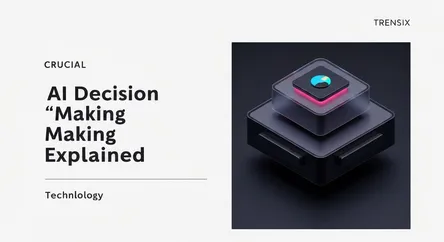Technology
AI Decision Making Explained

Discover how Artificial Intelligence is revolutionizing decision making by analyzing vast data sets to provide insights, predictions, and automation.
What is it?
AI decision making uses algorithms and machine learning models to analyze complex datasets far beyond human capacity. Instead of relying solely on intuition, this technology provides data-driven recommendations, predicts future outcomes, or even automates choices entirely. Examples range from Netflix suggesting your next show to complex systems managing stock market trades or optimizing logistics for global shipping companies. It's about augmenting human intelligence or automating routine decisions for greater speed and accuracy.
Why is it trending?
The trend is fueled by the explosion of big data and affordable, powerful computing. Businesses are racing to leverage AI to gain a competitive advantage. It allows for faster, more consistent, and often less biased decisions, leading to increased efficiency and profitability. From personalizing marketing campaigns to predicting equipment failure in factories, the applications are vast and transformative, making it a critical tool for modern operations and strategy.
How does it affect people?
On a daily basis, AI decision making influences the ads we see, the loan rates we're offered, and the news in our feeds. In professional fields, it helps doctors diagnose diseases more accurately and assists engineers in designing better products. However, it also raises important questions about algorithmic bias, job displacement in roles reliant on routine decision-making, and the need for transparency in how automated systems arrive at their conclusions.